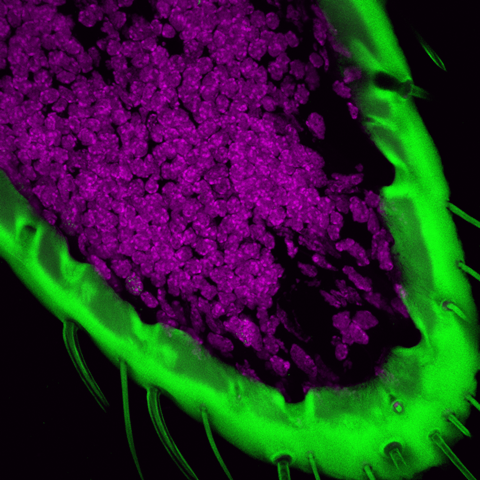Noses are as diverse as the species they belong to. Ants use antennae to detect and process olfactory signals. But without the Orco protein, the development of the required neurons is halted.
What we see here is the ‘nose’ or antenna of Harpegnathos saltator, also known as the Indian jumping ant. The green layer is the cuticle or outer layer of the antenna, which also features small hairs that detect pheromones. The magenta signal shows neurons inside the antenna that process the olfactory signals.

Based on previous studies, researchers at New York University knew that the Orco protein plays a crucial role in olfactory processing. Ants with a mutation in the orco gene had a diminished ‘sense of smell’, which resulted in less functional social behavior. A striking finding was that their antennae turned out to be almost empty inside.
New studies by the NYU team, published in Science Advances, reveal that a lack of Orco protein leads to premature termination of olfactory receptor development. As these receptors therefore fail to reach their intended destination in the antennae, the neurons cannot ‘fire’ any signals which also halts their development and results in neuronal death, leaving the antennae empty.
Bogdan Sieriebriennikov, Kayli Sieber, et al. Orco-dependent survival of odorant receptor neurons in ants, Science Advances (2024), doi:10.1126/sciadv.adk9000
Do you have nice pictures of your experiments that you want to share with C2W International? Send them to redactie@kncv.nl













Nog geen opmerkingen